The delicate flower stalks and snowflake-like flowers of this underutilized woodland native plant will rustle in the slightest breeze and provide spring interest to your shade garden. Feature twoleaf miterwort (
Mitella diphylla) at the edge of a shade or woodland planting where you can appreciate its tiny, delicate flowers. Or try massing it under a tree or letting it weave through your woodland garden border as it provides a layered effect with neighboring plants. It’s an easy plant to grow and easy to maintain once it’s established. Your reward for planting this native plant is snowflakes in the spring.
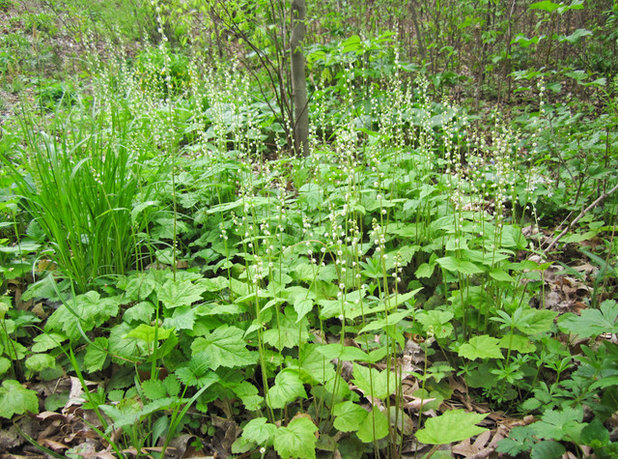
Holm Design & Consulting LLC
Botanical name: Mitella diphylla Common names: Twoleaf miterwort, bishop’s cap
Origin: Native to eastern North America, from Minnesota south to Arkansas in the west and New Hampshire south to Georgia in the east; also occurs in Ontario and Quebec in Canada
Where it will grow: Hardy to -40 degrees Fahrenheit (USDA zones 3a to 7b; find your zone)
Typical plant communities: Woodlands, both boreal and deciduous, in upland sites, including rocky cliffs and outcroppings
Soil requirement: Wet-mesic to dry soil; sand to clay-loam
Light requirement: Partial sun to partial shade
Mature size: 6 to 15 inches tall and 12 to 18 inches wide
Shown: Twoleaf miterwort in a woodland garden
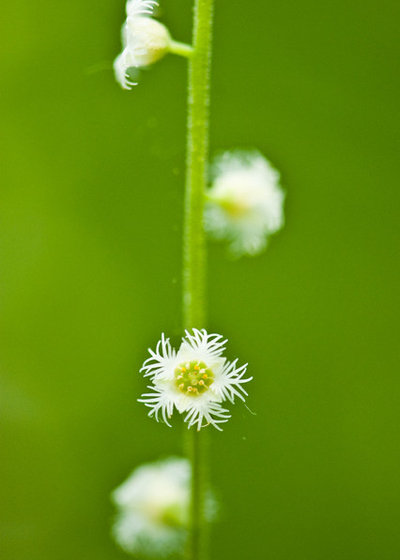
Holm Design & Consulting LLC
Benefits and tolerances: Tolerates most soil types except extremely wet, clay soil
Seasonal interest: Delicate white flowers open in early spring; shiny black seeds are held in open cups in early summer; the clumped basal foliage remains vibrant green throughout the summer and early fall.
When to plant: Spring or fall; seeds and plants are available from most native-plant nurseries in the Midwest and Northeast; seedlings can be transplanted in the spring or fall as well.
Shown: Close-up of the snowflake-like fringed flowers
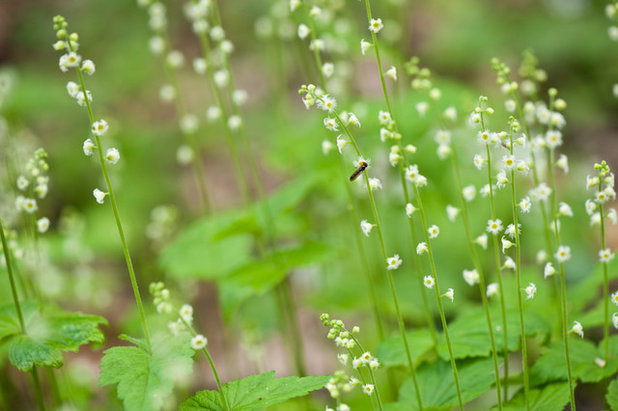
Holm Design & Consulting LLC
Distinguishing traits. The tiny white flowers are twoleaf miterwort’s most interesting trait. The five petals are fringed, giving the flowers a delicate, lacy appearance. You have to get up close to the flowers to really appreciate this feature, as they are quite tiny. This woodland native plant blooms in May; the flowers open from the bottom of the flower stalk upward, usually providing color for close to a month.
The plant’s form, with compact basal foliage, resembles that of many types of coral bells (plants in the
Heuchera genus). The leaves on the flower stalks are opposite and clasping.
The flower stalks can be browsed by deer. To prevent browsing, use a safe deer repellant spray such as Liquid Fence. In my experience, deer do not seem as interested in eating the basal foliage.
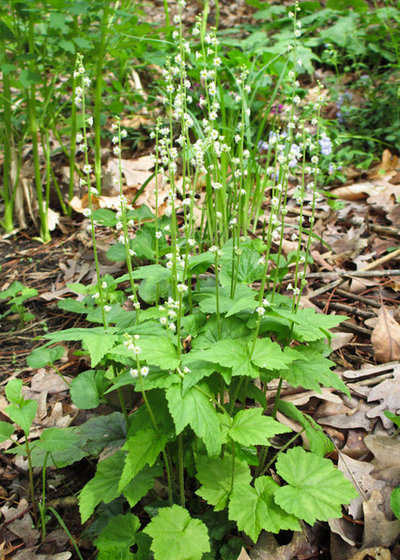
Holm Design & Consulting LLC
How to use it. Twoleaf miterwort is rhizomatous, and once planted it spreads and forms intermittent clusters (not dense clusters). The plants also readily reseed. They can therefore be interplanted with other woodland plants, including shade-tolerant plants that flower earlier or later for a layered effect.
Plant twoleaf miterwort in masses under trees, in any shade or woodland garden edge or border, or in tight (narrow) spaces, such as along a house foundation’s shady side.
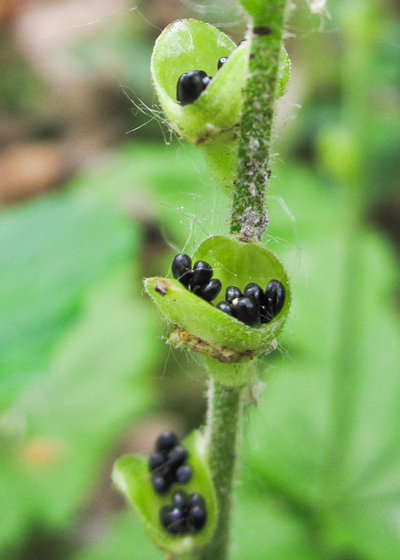
Holm Design & Consulting LLC
Planting notes. Twoleaf miterwort is relatively easy to grow, and you will likely find more seedlings once you have a population of flowering plants. The seedlings have shallow roots and take well to transplanting. Use the seedlings to fill in any gaps in a massed planting or in a new shady location in need of some texture and delicate flowers.
The shiny, black seeds are held in cups (sepals) on the flower stalks. When the seeds are mature, the stalks straighten to orient the cups upward. During a subsequent rainfall, raindrops splash the seeds out of the cups and disperse them away from the plant.
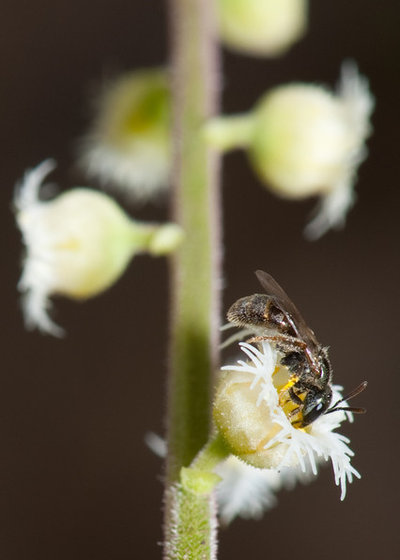
Holm Design & Consulting LLC
Pollinator notes. The flowers are extremely tiny in diameter, and the flower stalks are delicate. These floral traits dissuade medium-size or large bees from attempting to land or feed on the flower’s resources. Therefore, the main pollinators of twoleaf miterwort are small and able to land on the flowers. Common bee visitors include small sweat bees (
Lasioglossum spp), shown here, and sweat bees (
Augochlorella spp). Look for many types of syrphid flies also visiting the flowers.





